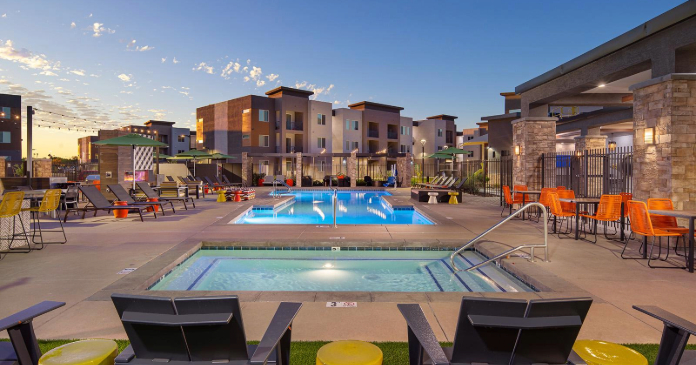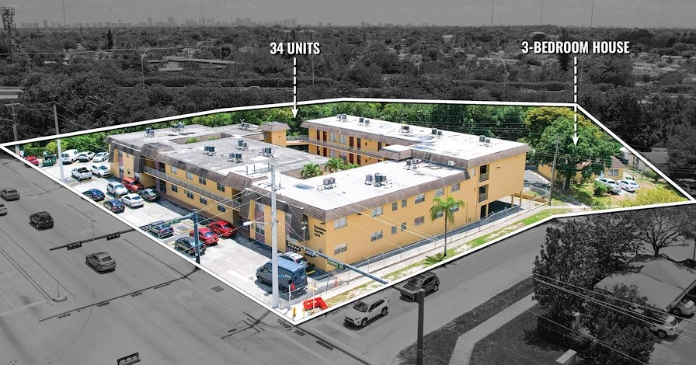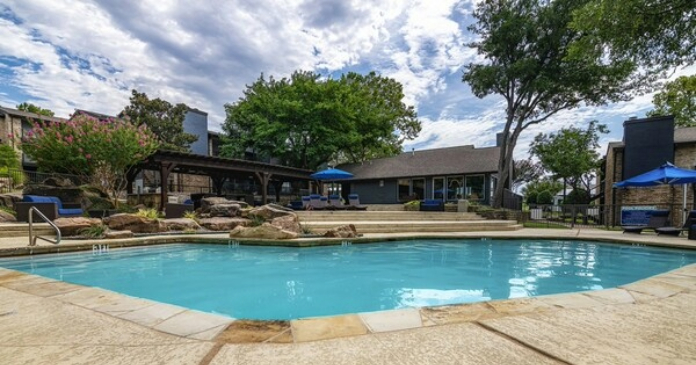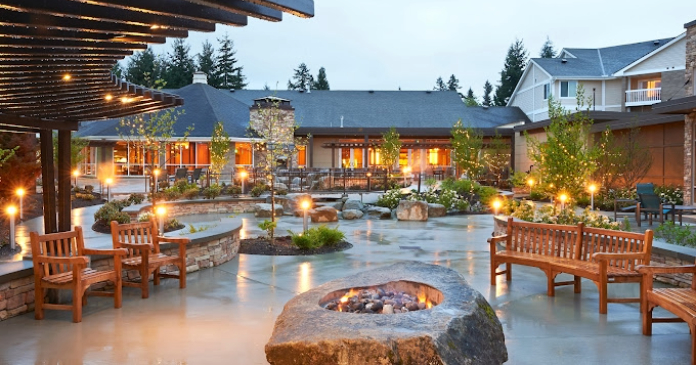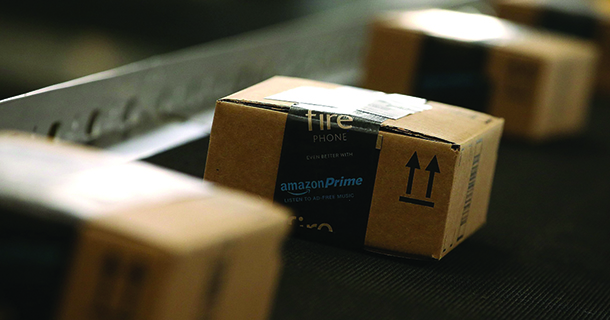
In 2010 its annual revenue was $34 billion; last year, $107 billion. In 2010 the company employed 33,700 workers. By this June, it had 268,900. To have enough office space for its swelling headquarters staff, Amazon has swallowed Seattle’s South Lake Union neighborhood, and it’s building three tree-filled biospheres in the city that will allow workers to take contemplative breaks, like so many Ralph Waldo Emersons in Jetsonian luxury. The company is the fifth-most valuable in the world: Its market capitalization is about $366 billion, which is roughly equal to the combined worth of Walmart, FedEx, and Boeing.
For years, Amazon lost money as Chief Executive Officer Jeff Bezos ignored Wall Street’s concerns and poured billions into such initiatives as e-readers, robot-enhanced warehouses, smartphones, tablets, and television shows. Yet in July, the company posted its fifth straight quarterly profit. Amazon Web Services, its cloud computing division, alone had sales of $7.9 billion last year. “We could have stuck to the knitting,” Bezos wrote in Amazon’s most recent annual report. “I’m glad we didn’t. Or did we?”
The base is all about the Prime
Amazon’s ambitions depend on the continued success of its Prime service. For $99 a year, Amazon Prime customers get two-day delivery at no extra charge. Those who sign up tend to spend almost three times as much as their non-Prime peers. The company zealously guards its numbers, but Consumer Intelligence Research Partners estimates that Amazon had 63 million Prime members as of late June—19 million more than the year before. Amazon keeps subscribers in the fold by lavishing them with perks such as free access to Amazon Video, the Kindle Owners’ Lending Library, and trial subscriptions to the Washington Post, which Bezos, a billionaire many times over, purchased for $250 million in cash three years ago. But more than anything, Prime members sign up for that fast shipping, which keeps getting faster. In many large cities, subscribers can now get free two-hour delivery on more than 25,000 items they might otherwise have bought at Walgreens or 7-Eleven. For an additional $7.99, orders arrive within an hour. Some company executives joked that the service should be called Amazon Magic; they went with Prime Now.
Providing near-instant gratification on Amazon’s scale isn’t cheap. Last year the company spent $11.5 billion on shipping—nearly twice what it did two years ago. Along with leasing jets and buying trailers, Amazon has opened more than 28 sorting centers, 59 delivery stations that feed packages to local couriers, and more than 65 Prime Now hubs stocked with best-selling items that can be rushed to customers around the world, according to MWPVL International, a Montreal-based supply chain consultant. “This year we estimate Amazon is going to sell 7.2 billion items,” says Gene Munster, an Internet industry analyst at Piper Jaffray. “In 2020, which is only four years away, we expect them to sell 12.6 billion items.”
Building the infrastructure
In June, Deutsche Bank released a report predicting that Amazon will eventually have a global shipping operation capable of moving goods directly from factories in China to customers in the U.S. and Europe, using not just 767s and container ships, but also self-driving trucks and drones. The report also said Amazon has a patent for “anticipatory package shipping” technology, which is just what it sounds like: When some Prime subscriber buys more deodorant, Amazon already has the box standing by, ready to label and ship. “It’s just one giant math exercise,” Deutsche Bank wrote, adding that Amazon has “hundreds of Ph.D. mathematicians” who spend their days optimizing logistics.
Bezos did briefly discuss his plans for delivery in June, onstage at Recode’s third annual Code Conference in Rancho Palos Verdes, Calif. He took a seat in a red leather chair beside Recode co-founder Walt Mossberg, who would be his amiable inquisitor. Bezos fielded questions about everything from Blue Origin, his space exploration venture, to the Washington Post, to Amazon’s own physical bookstores, which are opening in cities such as Chicago, Seattle, and Portland, Ore.
“Personally, I’m utterly astonished sometimes that this box shows up on Sunday, and I only bought it on Saturday at 7 o’clock,” Mossberg said.
Like a lot of other people, he wanted to know what was going on. “Are you aiming to take over that last mile?” Mossberg asked.
Bezos shook his head. He said Amazon was creating a delivery network that added to—and didn’t replace—those of FedEx, UPS, and the U.S. Postal Service. “It’s not that we are trying to take over,” he said.
“You’re not trying to put FedEx out of business?” Mossberg prodded him.
“No,” Bezos said.
“Or get better prices from them?”
“No, in fact what we want…” Then Bezos paused for a moment and smiled. “Well, we’d always like better prices,” he said. “Yeah, feel free.” The audience laughed, and Bezos completed his thought: “We will take all the capacity that the U.S. Postal Service can give us and that UPS can give us and we still need to supplement it. So we’re not cutting back. We’re growing our business with UPS. We’re growing our business with the U.S. Postal Service.”
That upon which you focus, increases
Bezos has been consumed with delivery since he founded Amazon in 1994. After all, if he couldn’t get orders to people fast enough, they’d just buy stuff in stores. Rossman, the former Amazon executive, says Bezos and his team also saw delivery as a way to fend off competitors who might have wanted to get into e-commerce—in particular Google, and later Facebook. “They’ve always thought one of their best defenses against Google and Facebook was that they don’t understand logistics,” Rossman says.
In 1999, Amazon invested $60 million in Kozmo.com, a startup whose orange-suited bike messengers provided one-hour delivery of sundries in New York, San Francisco, and a few other cities. When Kozmo imploded in 2001, alongside many other companies from the first dot-com boom, it was widely ridiculed as one of the more misguided endeavors of the era, along with failed online supermarket Webvan.
Amazon learned a different lesson. When it entered developing countries such as China and India, it used bike messengers to provide Kozmo-style delivery. Amazon also hired former executives from Webvan to launch AmazonFresh, a grocery delivery service that began in 2007. But what really pushed the company into building a much larger-scale delivery operation was Prime.
Prime changes everything
Following its 2005 introduction, Prime attracted around 8 million members in five years, according to Deutsche Bank. To fulfill the promise of free two-day delivery, Amazon had to rush many of their orders using pricey expedited services at FedEx and UPS. By 2011, a former Amazon executive says, the company realized it would soon overwhelm FedEx and UPS during the holidays: “We were just going to blow them out of the water.” So, he says, Amazon decided to create an alternative.
Amazon cozied up to the U.S. Postal Service in an attempt to reduce its dependence on UPS and FedEx. In November 2013 the Postal Service announced it would deliver Amazon packages on Sunday. Amazon also began building a chain of sorting centers that used machine learning to separate boxes by ZIP code and hurry them directly to the proper post offices for home delivery.
By the end of 2014, Amazon had 23 sorting centers in the U.S. “A blitz is the way to describe it,” says Ben Conwell, a former Amazon real estate executive involved in the construction spree. “Those buildings couldn’t open fast enough.” The same year, Amazon launched Prime Now in New York, with couriers who drove cars, rode bikes, and took public transportation. “They have people riding the subway in New York with carts loaded up with Amazon boxes,” says Marc Wulfraat, founder of MWPVL, the supply chain consultant. “They use students, hustlers, people who are just trying to make a buck.” Amazon has since extended Prime Now to more than 40 cities. The service’s most popular items are bottled water and toilet paper.
Last September, Amazon introduced an on-demand delivery program called Amazon Flex. With Flex, people with transportation and some time on their hands log in to an app, indicate their availability, and then pick up and deliver Prime Now packages, much as Uber drivers do with people. Amazon Flex deliveries come in handy when there’s an unexpected surge in Prime Now orders, such as before a blizzard on the East Coast when the entire island of Manhattan is stocking up on canned soup. In the early hours of July 31, it was Flex couriers who transported copies of Harry Potter and the Cursed Child to Prime Now customers.
UPS and FedEx have shrugged off Amazon’s threat to their business, in public anyway. On a conference call in February, UPS CEO David Abney was diplomatic: “Amazon’s a good customer of ours. We have a mutually beneficial relationship.” In an investor call the following month, FedEx CEO Fred Smith scoffed at the notion that Amazon might challenge his company, calling it “fantastical.” Lieb, the Northeastern professor, who’s been talking to CEOs in the shipping industry for 23 years, says they’re less confident in private. “When Amazon was talking about same-day delivery, people said, ‘Who cares? We don’t want that business anyway,’ “ Lieb says. But once Amazon began leasing planes, they started to worry. “Amazon’s market entry strategy has pretty much been ‘I’m going to come in and I’m going to beat you to death with low prices,’ “ he says. “If Amazon follows that tactic, they would destabilize this industry rather quickly.”
The fear has spread to Wall Street, where analysts say investors worry about what Amazon’s strategy means for the shipping industry. “The natural inclination among any observers of the market when they see Amazon is to be scared,” says David Vernon, a Sanford C. Bernstein analyst who tracks the shipping market. “Amazon is the epitome of a zero-sum game.”
How do you solve a problem like eCommerce?
According to a 2015 National Multifamily Housing Council (NMHC) renter preferences study, 72 percent of residents want a package delivery and holding area, so much so that they are willing to pay a premium for it.
“NMHC has done study after study on the topic and package management comes up as one of the most important amenities to residents every time,” Barry Hume, president of Boston, Mass.-based Package Concierge says. “There’s going to be a point in the not too distant future that it will become the most important amenity.”
“Residents are ordering packages, and their expectation is that the packages will be delivered to their homes,” Hume says. “Residents also believe it is our problem to deal with the packages, not theirs. As an industry, we need to figure out how tackle the problem.”
Package Concierge raised $500,000 in equity funding in July. “These funds will provide a monumental boost to our research and development and lead technological innovation in package management,” said Georgianna Oliver, CEO and founder.
Founded in 2012, Package Concierge works with some of the nation’s largest real estate management companies: Alliance Residential, Avalon Bay Communities, Berkshire Property Advisors, The Bozzuto Group, Equity, Greystar, The JBG Com-panies, Pinnacle and Winn Residential.
One size does not fit all
The need for package lockers grows more complex with each new ecommerce model to hit the market. First, there’s matching the right locker confirguraton to the right community type. A high-rise in Manhattan is likely a better fit for an indoor locker, whereas a garden community in Springfield, Mo., might be better suited for an outdoor, weather proofed product. Then, there are a variety of locker size and types, and innovations that evolve with every new model that comes to market.
With the growing popularity of Amazon Fresh, Blue Apron and other grocery and flower services, refrigerated lockers have become important to many residents who rely on online deliveries.
“The future of delivery is now,” says Arik Levy, CEO of Luxer One. “Next year we will carry out a number of product expansions to meet the growth of the market. We expect to launch both refrigerator lockers to accommodate the growing demand for the delivery of perishables, as well as outdoor lockers that expand our product to apartment communities that need an exterior solution. This includes garden apartments, or those with exterior mail configurations.”
Locker configuration and location are but two pieces of a delivery network that only grows more complicated. The Wall Street Journal recently reported that 30 percent of online purchases are returned, as compared to only 9 percent of brick and mortar stores. The changing dynamics of ecommerce are also creating new niches like package drop off, a value add for residents that can enhance a communities market competitiveness by saving residents valuable time at little to no investment to the community.
A number of package locker providers also offer on-site outbound shipping services. “Properties can now automate this with Luxer One’s outbound shipping feature,” said Levy. “Residents simply place a ready-to-send package in a locker compartment and follow the on-screen prompts to notify a local carrier to pick up the package.” Levy says residents have loved the service because it saves them a trip to their local UPS or FedEx store.
With the largest merchants in the nation at work on the perfect infrastructure and logistics, the ability of multifamily communities to accommodate the ensuing river of packages will be not only critical, but imperative to the life of a resident. By any standard, the future is already here.
Excerpt: Will Amazon kill FedEx? Devin Leonard, Bloomberg with Spencer Soper, Nicholas Brautlecht, Richard Weiss and Carol Matlack











